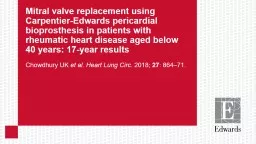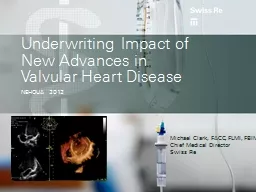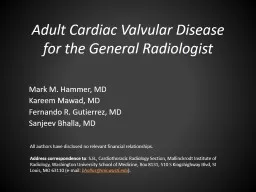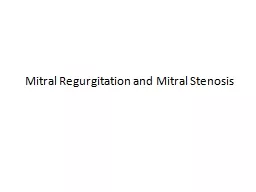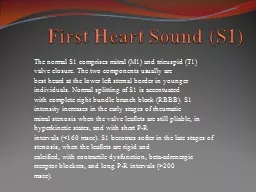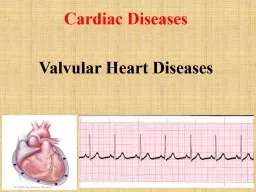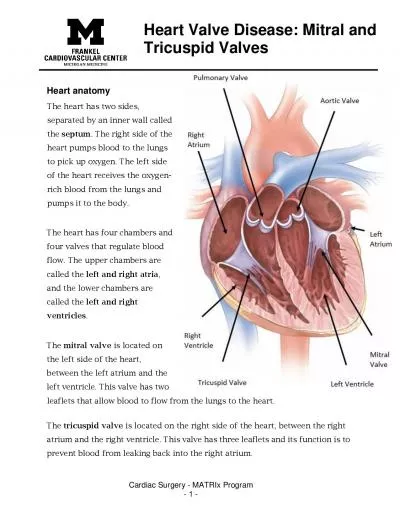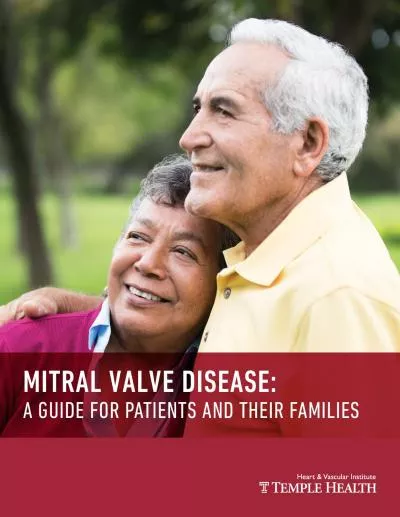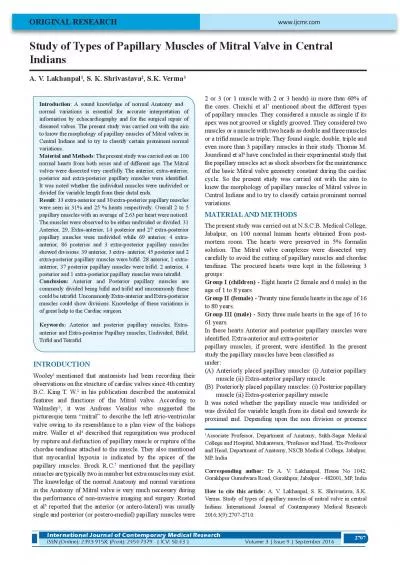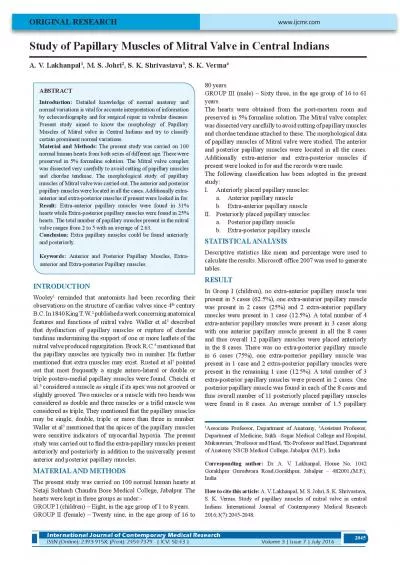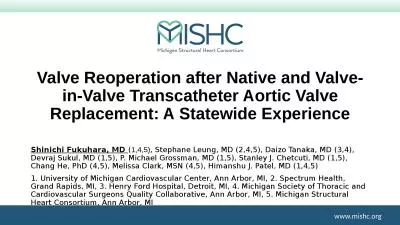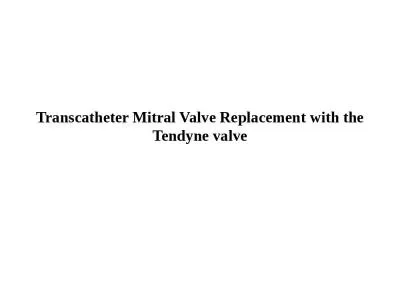PPT-Mitral valve replacement using
Author : joyousbudweiser | Published Date : 2020-06-17
Carpentier Edwards pericardial bioprosthesis in patients with rheumatic heart disease aged below 40 years 17year results Chowdhury UK et al Heart Lung Circ 2018
Presentation Embed Code
Download Presentation
Download Presentation The PPT/PDF document "Mitral valve replacement using" is the property of its rightful owner. Permission is granted to download and print the materials on this website for personal, non-commercial use only, and to display it on your personal computer provided you do not modify the materials and that you retain all copyright notices contained in the materials. By downloading content from our website, you accept the terms of this agreement.
Mitral valve replacement using: Transcript
Download Rules Of Document
"Mitral valve replacement using"The content belongs to its owner. You may download and print it for personal use, without modification, and keep all copyright notices. By downloading, you agree to these terms.
Related Documents

